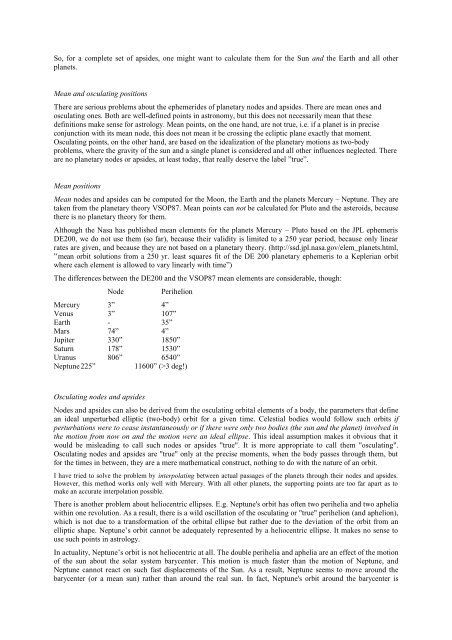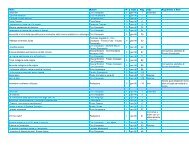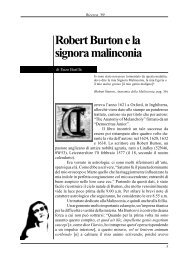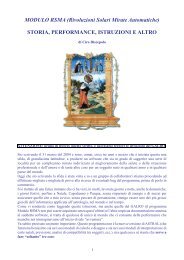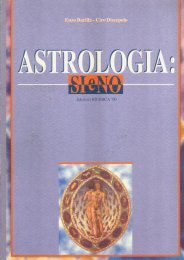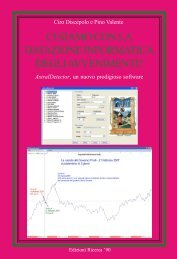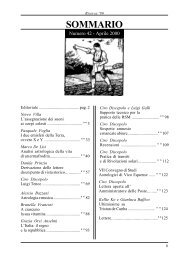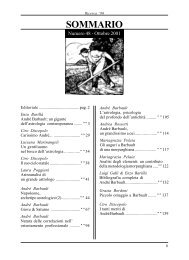Programming interface to the Swiss Ephemeris - programmiastral.com
Programming interface to the Swiss Ephemeris - programmiastral.com
Programming interface to the Swiss Ephemeris - programmiastral.com
You also want an ePaper? Increase the reach of your titles
YUMPU automatically turns print PDFs into web optimized ePapers that Google loves.
So, for a <strong>com</strong>plete set of apsides, one might want <strong>to</strong> calculate <strong>the</strong>m for <strong>the</strong> Sun and <strong>the</strong> Earth and all o<strong>the</strong>r<br />
planets.<br />
Mean and osculating positions<br />
There are serious problems about <strong>the</strong> ephemerides of planetary nodes and apsides. There are mean ones and<br />
osculating ones. Both are well-defined points in astronomy, but this does not necessarily mean that <strong>the</strong>se<br />
definitions make sense for astrology. Mean points, on <strong>the</strong> one hand, are not true, i.e. if a planet is in precise<br />
conjunction with its mean node, this does not mean it be crossing <strong>the</strong> ecliptic plane exactly that moment.<br />
Osculating points, on <strong>the</strong> o<strong>the</strong>r hand, are based on <strong>the</strong> idealization of <strong>the</strong> planetary motions as two-body<br />
problems, where <strong>the</strong> gravity of <strong>the</strong> sun and a single planet is considered and all o<strong>the</strong>r influences neglected. There<br />
are no planetary nodes or apsides, at least <strong>to</strong>day, that really deserve <strong>the</strong> label ”true”.<br />
Mean positions<br />
Mean nodes and apsides can be <strong>com</strong>puted for <strong>the</strong> Moon, <strong>the</strong> Earth and <strong>the</strong> planets Mercury – Neptune. They are<br />
taken from <strong>the</strong> planetary <strong>the</strong>ory VSOP87. Mean points can not be calculated for Plu<strong>to</strong> and <strong>the</strong> asteroids, because<br />
<strong>the</strong>re is no planetary <strong>the</strong>ory for <strong>the</strong>m.<br />
Although <strong>the</strong> Nasa has published mean elements for <strong>the</strong> planets Mercury – Plu<strong>to</strong> based on <strong>the</strong> JPL ephemeris<br />
DE200, we do not use <strong>the</strong>m (so far), because <strong>the</strong>ir validity is limited <strong>to</strong> a 250 year period, because only linear<br />
rates are given, and because <strong>the</strong>y are not based on a planetary <strong>the</strong>ory. (http://ssd.jpl.nasa.gov/elem_planets.html,<br />
”mean orbit solutions from a 250 yr. least squares fit of <strong>the</strong> DE 200 planetary ephemeris <strong>to</strong> a Keplerian orbit<br />
where each element is allowed <strong>to</strong> vary linearly with time”)<br />
The differences between <strong>the</strong> DE200 and <strong>the</strong> VSOP87 mean elements are considerable, though:<br />
Node<br />
Perihelion<br />
Mercury 3” 4”<br />
Venus 3” 107”<br />
Earth - 35”<br />
Mars 74” 4”<br />
Jupiter 330” 1850”<br />
Saturn 178” 1530”<br />
Uranus 806” 6540”<br />
Neptune 225” 11600” (>3 deg!)<br />
Osculating nodes and apsides<br />
Nodes and apsides can also be derived from <strong>the</strong> osculating orbital elements of a body, <strong>the</strong> parameters that define<br />
an ideal unperturbed elliptic (two-body) orbit for a given time. Celestial bodies would follow such orbits if<br />
perturbations were <strong>to</strong> cease instantaneously or if <strong>the</strong>re were only two bodies (<strong>the</strong> sun and <strong>the</strong> planet) involved in<br />
<strong>the</strong> motion from now on and <strong>the</strong> motion were an ideal ellipse. This ideal assumption makes it obvious that it<br />
would be misleading <strong>to</strong> call such nodes or apsides "true". It is more appropriate <strong>to</strong> call <strong>the</strong>m "osculating".<br />
Osculating nodes and apsides are "true" only at <strong>the</strong> precise moments, when <strong>the</strong> body passes through <strong>the</strong>m, but<br />
for <strong>the</strong> times in between, <strong>the</strong>y are a mere ma<strong>the</strong>matical construct, nothing <strong>to</strong> do with <strong>the</strong> nature of an orbit.<br />
I have tried <strong>to</strong> solve <strong>the</strong> problem by interpolating between actual passages of <strong>the</strong> planets through <strong>the</strong>ir nodes and apsides.<br />
However, this method works only well with Mercury. With all o<strong>the</strong>r planets, <strong>the</strong> supporting points are <strong>to</strong>o far apart as <strong>to</strong><br />
make an accurate interpolation possible.<br />
There is ano<strong>the</strong>r problem about heliocentric ellipses. E.g. Neptune's orbit has often two perihelia and two aphelia<br />
within one revolution. As a result, <strong>the</strong>re is a wild oscillation of <strong>the</strong> osculating or "true" perihelion (and aphelion),<br />
which is not due <strong>to</strong> a transformation of <strong>the</strong> orbital ellipse but ra<strong>the</strong>r due <strong>to</strong> <strong>the</strong> deviation of <strong>the</strong> orbit from an<br />
elliptic shape. Neptune’s orbit cannot be adequately represented by a heliocentric ellipse. It makes no sense <strong>to</strong><br />
use such points in astrology.<br />
In actuality, Neptune’s orbit is not heliocentric at all. The double perihelia and aphelia are an effect of <strong>the</strong> motion<br />
of <strong>the</strong> sun about <strong>the</strong> solar system barycenter. This motion is much faster than <strong>the</strong> motion of Neptune, and<br />
Neptune cannot react on such fast displacements of <strong>the</strong> Sun. As a result, Neptune seems <strong>to</strong> move around <strong>the</strong><br />
barycenter (or a mean sun) ra<strong>the</strong>r than around <strong>the</strong> real sun. In fact, Neptune's orbit around <strong>the</strong> barycenter is


